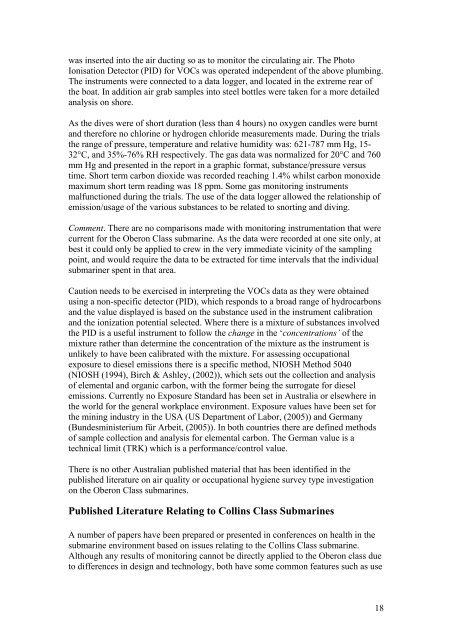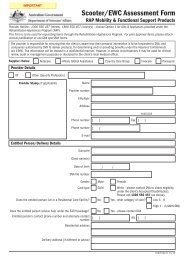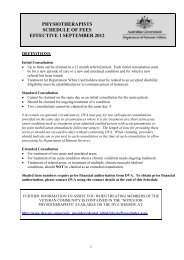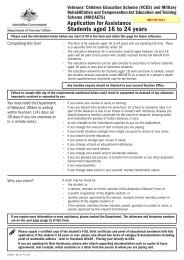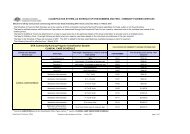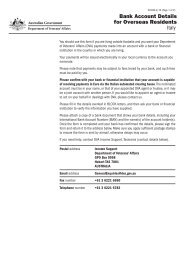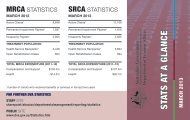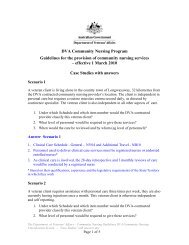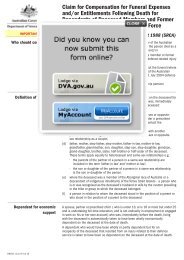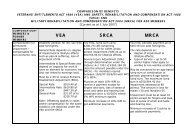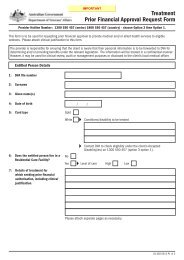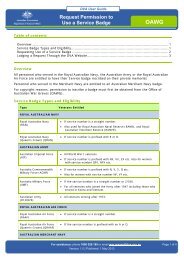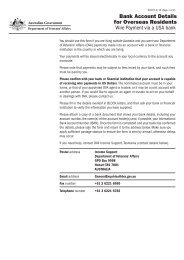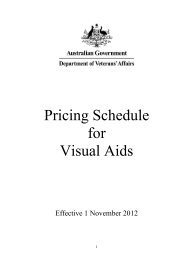Oberon Class Submarine Occupational Hygiene Project Final Report
Oberon Class Submarine Occupational Hygiene Project Final Report
Oberon Class Submarine Occupational Hygiene Project Final Report
Create successful ePaper yourself
Turn your PDF publications into a flip-book with our unique Google optimized e-Paper software.
was inserted into the air ducting so as to monitor the circulating air. The PhotoIonisation Detector (PID) for VOCs was operated independent of the above plumbing.The instruments were connected to a data logger, and located in the extreme rear ofthe boat. In addition air grab samples into steel bottles were taken for a more detailedanalysis on shore.As the dives were of short duration (less than 4 hours) no oxygen candles were burntand therefore no chlorine or hydrogen chloride measurements made. During the trialsthe range of pressure, temperature and relative humidity was: 621-787 mm Hg, 15-32°C, and 35%-76% RH respectively. The gas data was normalized for 20°C and 760mm Hg and presented in the report in a graphic format, substance/pressure versustime. Short term carbon dioxide was recorded reaching 1.4% whilst carbon monoxidemaximum short term reading was 18 ppm. Some gas monitoring instrumentsmalfunctioned during the trials. The use of the data logger allowed the relationship ofemission/usage of the various substances to be related to snorting and diving.Comment. There are no comparisons made with monitoring instrumentation that werecurrent for the <strong>Oberon</strong> <strong>Class</strong> submarine. As the data were recorded at one site only, atbest it could only be applied to crew in the very immediate vicinity of the samplingpoint, and would require the data to be extracted for time intervals that the individualsubmariner spent in that area.Caution needs to be exercised in interpreting the VOCs data as they were obtainedusing a non-specific detector (PID), which responds to a broad range of hydrocarbonsand the value displayed is based on the substance used in the instrument calibrationand the ionization potential selected. Where there is a mixture of substances involvedthe PID is a useful instrument to follow the change in the ‘concentrations’ of themixture rather than determine the concentration of the mixture as the instrument isunlikely to have been calibrated with the mixture. For assessing occupationalexposure to diesel emissions there is a specific method, NIOSH Method 5040(NIOSH (1994), Birch & Ashley, (2002)), which sets out the collection and analysisof elemental and organic carbon, with the former being the surrogate for dieselemissions. Currently no Exposure Standard has been set in Australia or elsewhere inthe world for the general workplace environment. Exposure values have been set forthe mining industry in the USA (US Department of Labor, (2005)) and Germany(Bundesministerium fűr Arbeit, (2005)). In both countries there are defined methodsof sample collection and analysis for elemental carbon. The German value is atechnical limit (TRK) which is a performance/control value.There is no other Australian published material that has been identified in thepublished literature on air quality or occupational hygiene survey type investigationon the <strong>Oberon</strong> <strong>Class</strong> submarines.Published Literature Relating to Collins <strong>Class</strong> <strong>Submarine</strong>sA number of papers have been prepared or presented in conferences on health in thesubmarine environment based on issues relating to the Collins <strong>Class</strong> submarine.Although any results of monitoring cannot be directly applied to the <strong>Oberon</strong> class dueto differences in design and technology, both have some common features such as use18


